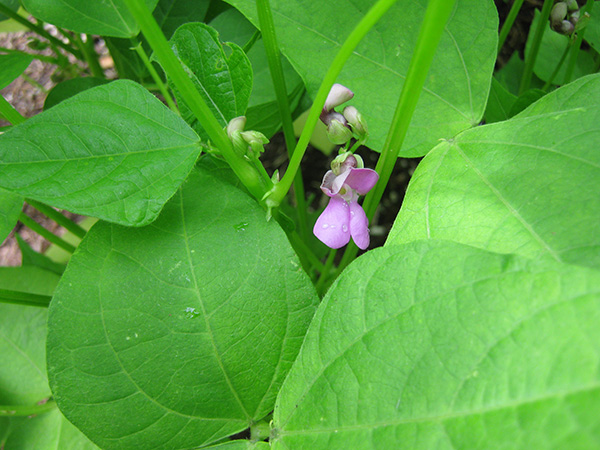
The permaculture vegetable garden I currently have is a much smaller endeavor than the first one I built. And while the first garden had plenty of sun, this garden has a lot of shade. The half-acre property where I live is surrounded by very tall trees, and a hill to the south, with a house on it; and there was really only one place that made sense to put the garden.
I used a similar technique to build this garden as I did with the first garden – buried wood – but the trenches are only about a foot deep, so they hold much less wood. Still, I think that they will last pretty well. And they will be easy to redo, if we decide to go that route.
How I built my permaculture garden
This time around I had more resources to use. My landlord, Rich, got right into helping me find the resources to build the garden.
As it is on his property, I wanted to try to make it a tidy process, but he didn’t seem to mind piling logs, horse manure, leaves, and wood chips on his lawn, and letting me dig trenches to put them in. What a good sport.
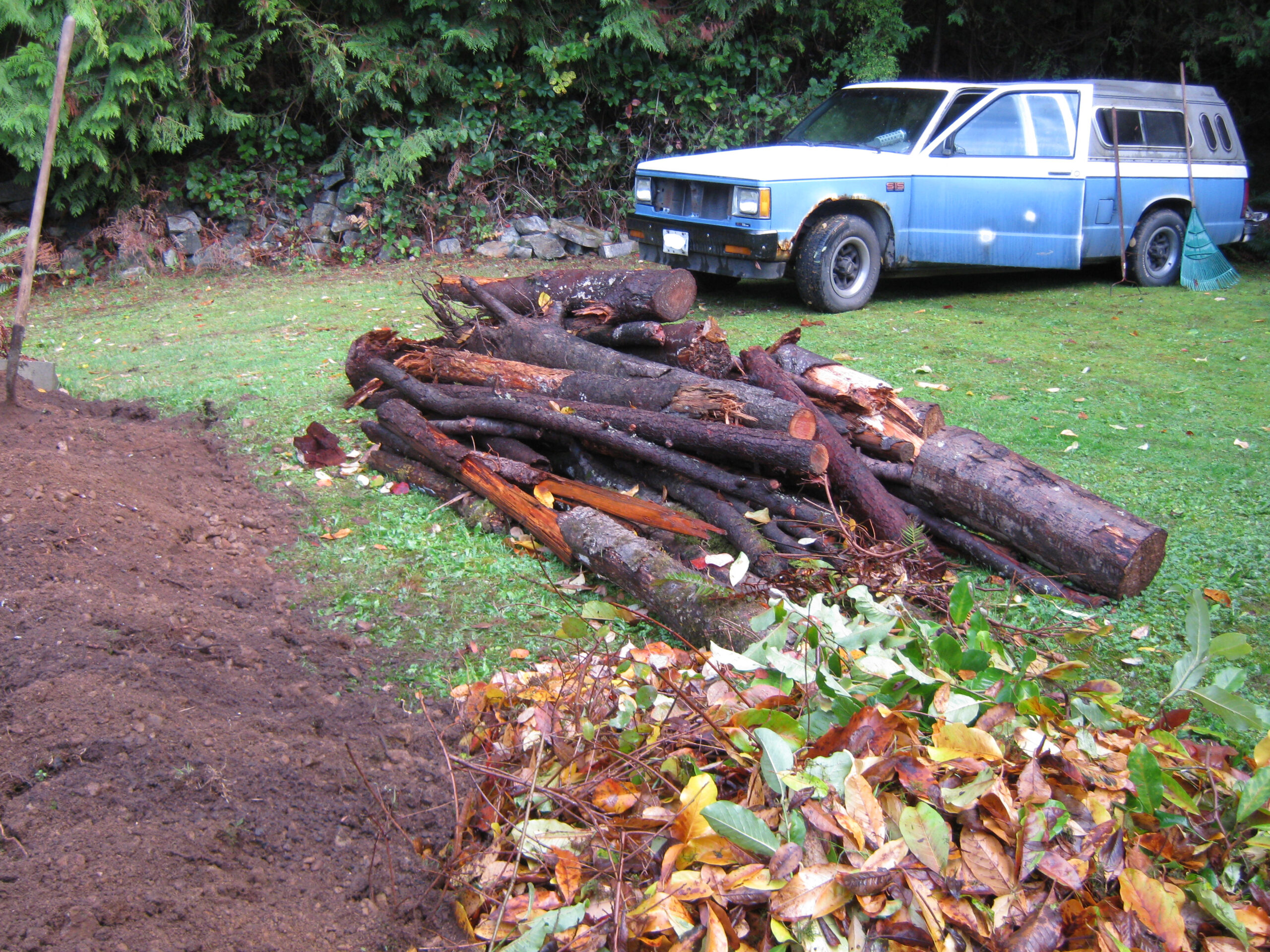
He also drove me around to gather all of this garden goodness. He has lived here most of his life, and I had just moved here, so he knew the good places to go to find the punky alder logs, leaves, and even wood chips. AND! He had a source for safe, clean horse manure that year, so he got a couple of truck loads.
So there I was, with mounds of natural gardening materials, and a space to build a garden. My happy place.
I started with digging trenches about a foot deep and 3 feet wide. I filled these trenches with the logs we had gathered, tucking smaller branches and soil dug from the trench into the spaces between the logs. I then topped the logs with layers of green stuff, leaves, manure, and soil.

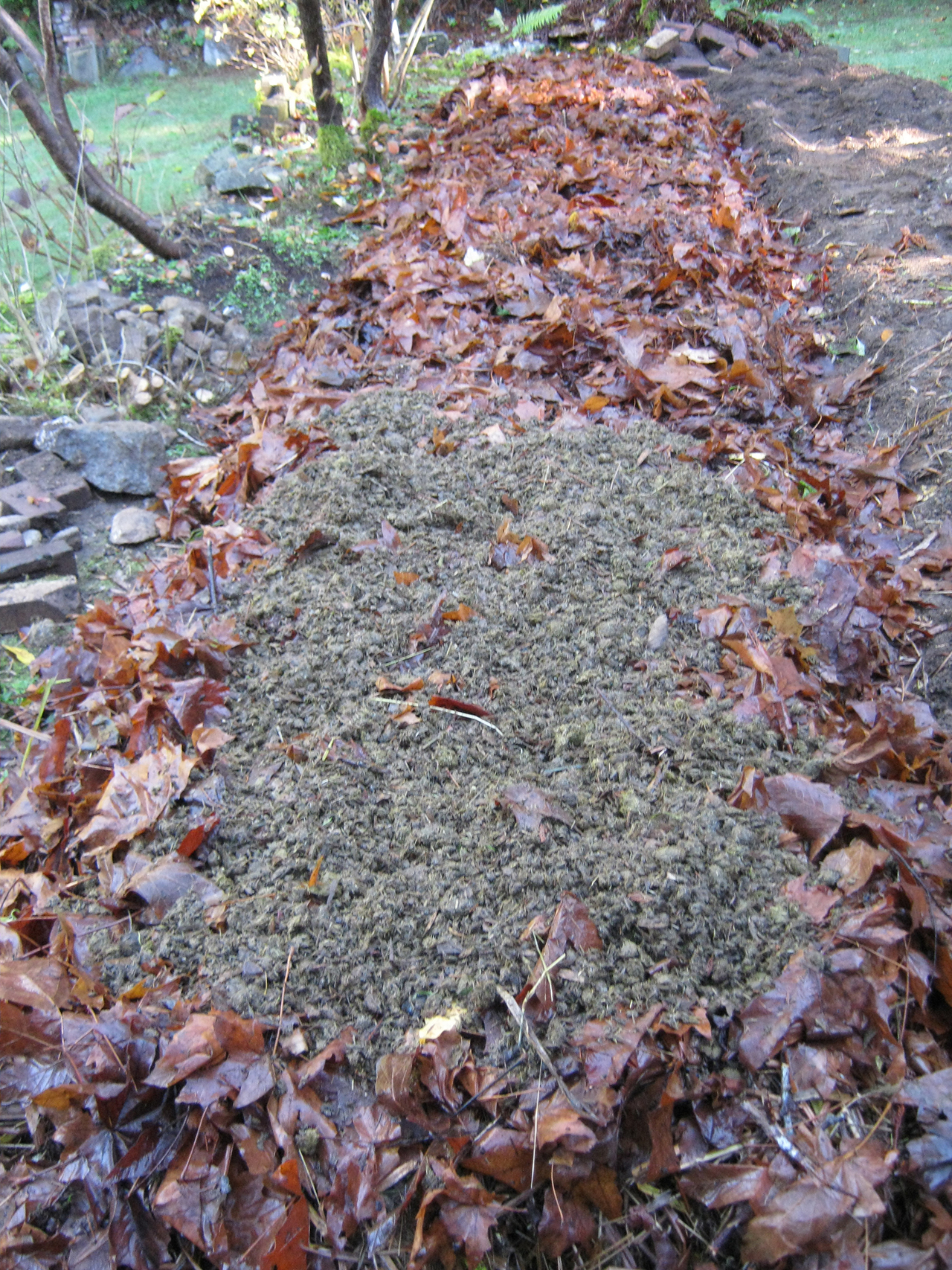
We built the beds in November 2018, so they had time to soak up the winter rains, and break down a bit. I mulched the beds with chopped up leaves (thanks to Rich’s lawn mower), and the paths with the wood chips and leaves.
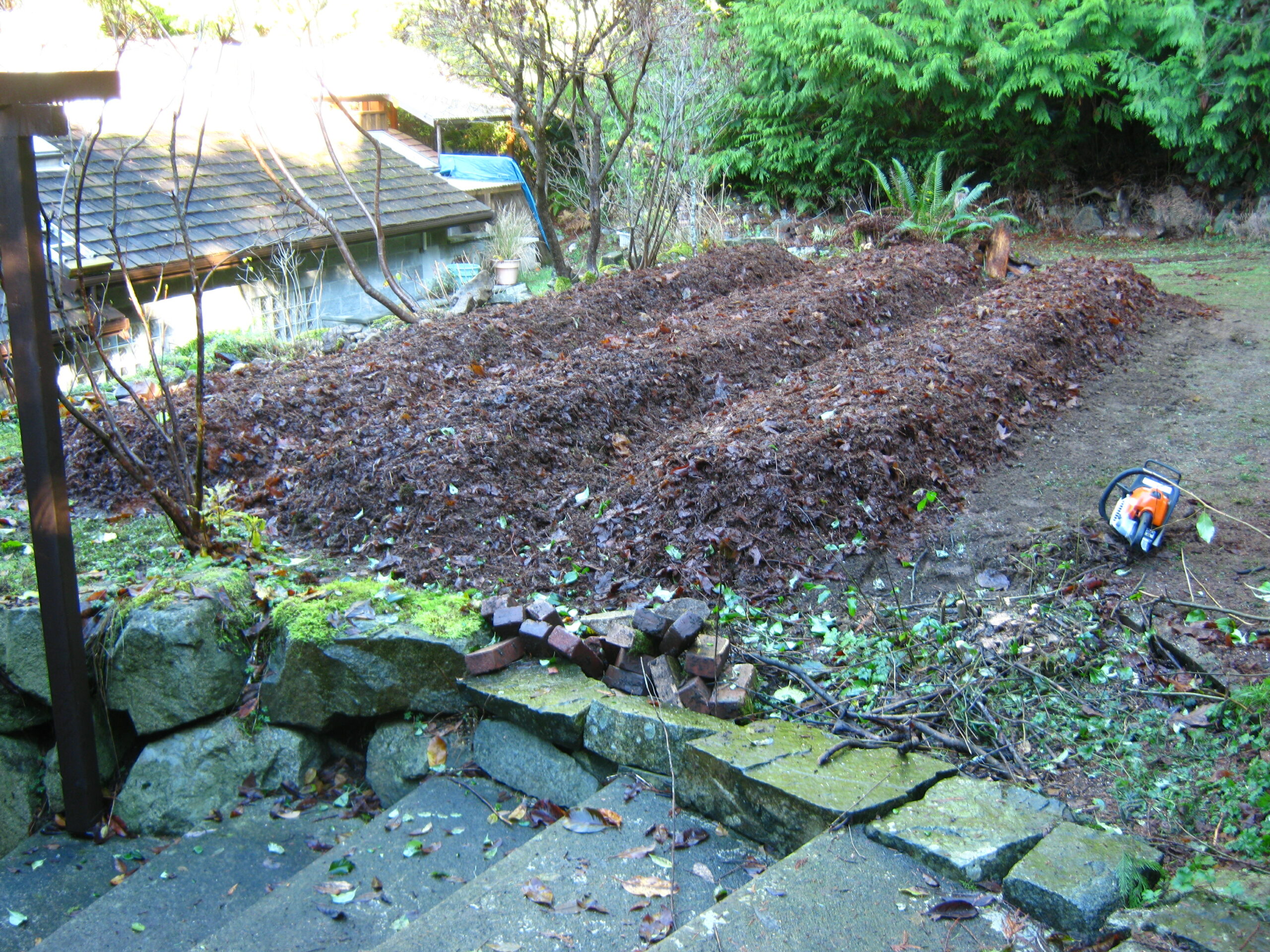
These kinds of beds settle quite a bit, as the smaller material settles down between the logs and branches and spreads out under the rains. The beds were about two feet high when built, but settled to about a foot high. The dog walking all over them and laying on top definitely added to their rapid shrinkage. He was a big help.
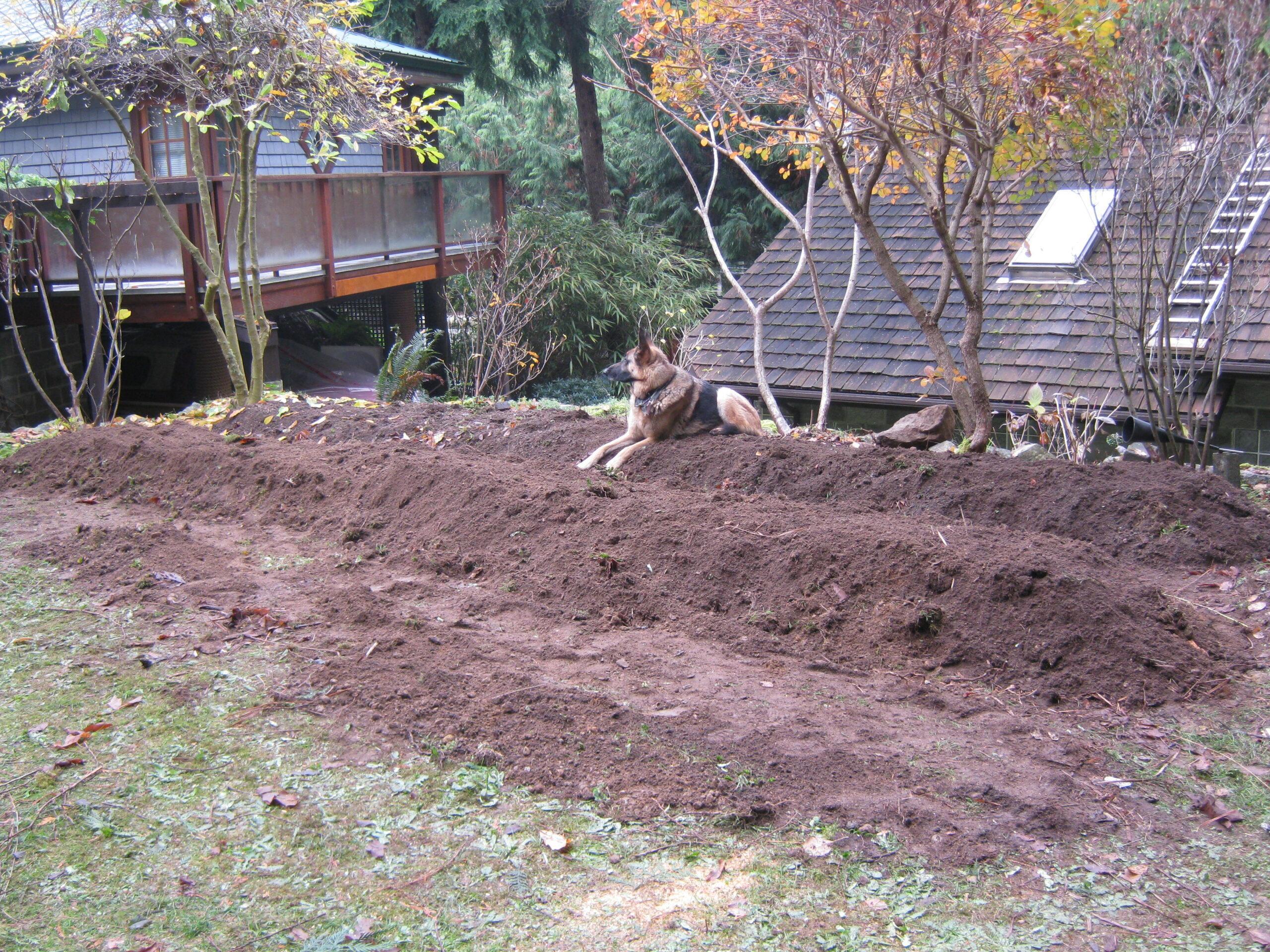
Winter came, and the rains fell, and I knew the punky logs in the beds were soaking it up. I couldn’t wait for spring!
Then the snow fell fast and furious in February 2019, and the temperatures dropped. The garden froze pretty solid, and any thoughts of planting snow peas in February were squashed.
Planting the garden
March came, but it took a long time for the snow to melt and the garden to thaw out. And that’s when I realized what the main limiting factor of this garden would be: sunlight.
There are some extremely tall trees and a hill to the south of the garden – and to the east, west and north as well. Lots of trees. But that’s okay. There are lots of things that grow just fine in short sunlight hours. And most other things will still grow, just a little bit slower. I wasn’t daunted.
The first day of spring came and went; but the garden was still pretty chilly, and there was still snow in the shadiest corner. Other properties that get more sun were already springing to life. But that’s okay, I thought. I’d just have to wait a little longer.
When the sunniest parts of the beds were thawed out, I planted some cool weather crops: mustard, radish, pac choi, and snow peas. Exciting times! As the little green things began to poke through, my grand visions of a new garden began to take shape. I planned and replanned the garden layout, taking advantage of the light that the garden would get.

Finally, the entire garden was getting sunlight, and all of my little transplants and seeds found their homes. Broccoli and carrots, green onions and cilantro, mustard, snow peas, and turnips; summer celery, lettuce, rapini, chard, kale, beets, and arugula. The Black Turtle Beans and zucchini were the last to go in.

More than just vegetables
Lots of other things found their way into the garden as well. Flowers filled all the spare spaces – and perhaps some of the not-so-spare places, as I really did plant a lot of flowers. Calendula, nasturtium, sweet alyssum, marigolds and sweet peas, brightened everything up, and brought the bees in droves. It was beautiful.
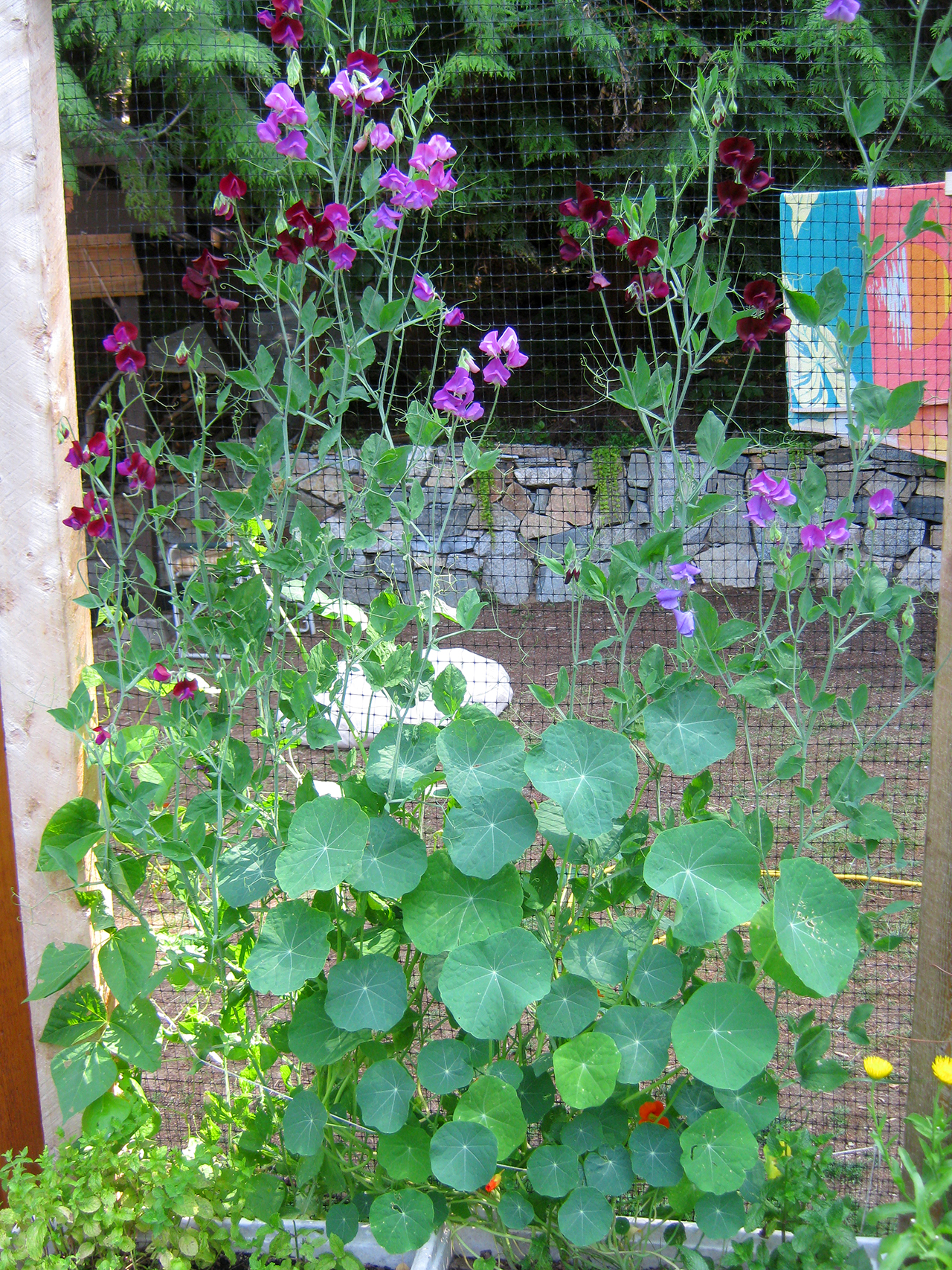
Herbs were also a big part of the plantings. Lemon balm and bee balm, chives and parsley, thyme and oregano, all found their places in the garden – as well as into our cooking, and healthy sun tea.
Rich already had rosemary growing on the property, as well as an old sage plant that I took a few cuttings from to plant here and there.
The good, the bad and the nibbled, in the garden
The garden grew so well that it started to get a little difficult to maneuver through! The nasturtiums were massive, and I had to keep cutting them back; and the calendula and borage became so top-heavy they needed to be staked. I gathered and dried a lot of calendula flowers to make infused oil. More on that in another post.
We harvested tons of greens for salads and stir-fry. Mixing up a big salad for lunch became a daily thing. Mustard, arugula, lettuce, beet greens, kale, chard, snow peas, and parsley and lots of other things, make a fairly spectacular salad. Especially when you toss in some chopped apples and seeds, or some tuna with mayo and hot sauce. I felt extremely virtuous, eating all those fresh greens every day.
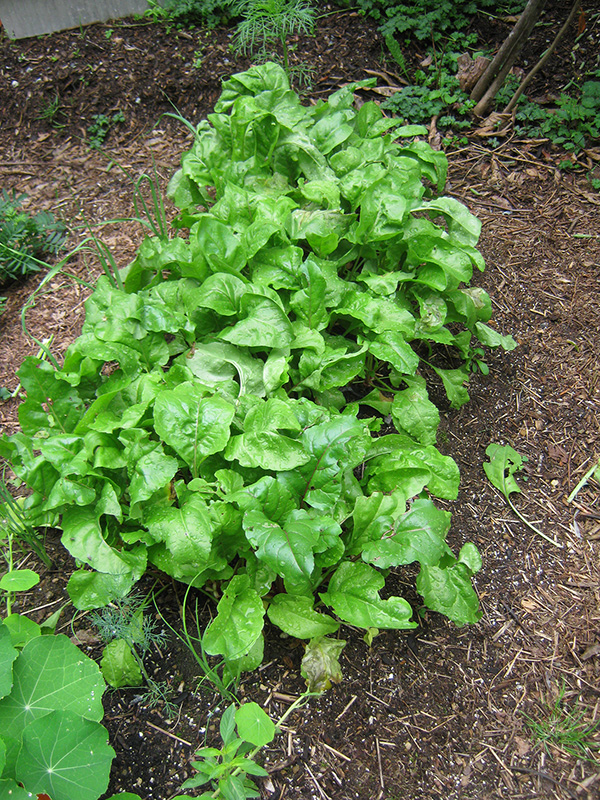
After eating fresh raw greens for lunch, I’d eat fresh stir-fried greens for dinner, along with broccoli, carrots, and whatever else was ripe and ready for eating.
For me, harvesting my dinner is a big part of the satisfaction of gardening. Walking through the garden with a basket, filling it with the freshest, ripest goodies, and then quickly stir frying them is immensely satisfying. It never gets old.
But not everything in a garden is always a success. Last year, the zucchini was a bust. Every new zucchini died of blossom end rot. I’ve never had trouble growing zucchini – nobody has trouble growing zucchini! – and I’m not sure why.
But I’ve read that lack of calcium can cause blossom end rot, so this year I’ll get some calcium into the soil and see how it goes. I really missed my zucchini.

The turnips did get some bug nibbles on them; but they tasted fine just the same. The beets didn’t grow terribly big, but the greens were big and lush, and they’re my favorite part anyway.
Walking through the garden and picking fresh vegetables and herbs for my daily meals just seems so . . . right. We should all be able to eat like this.
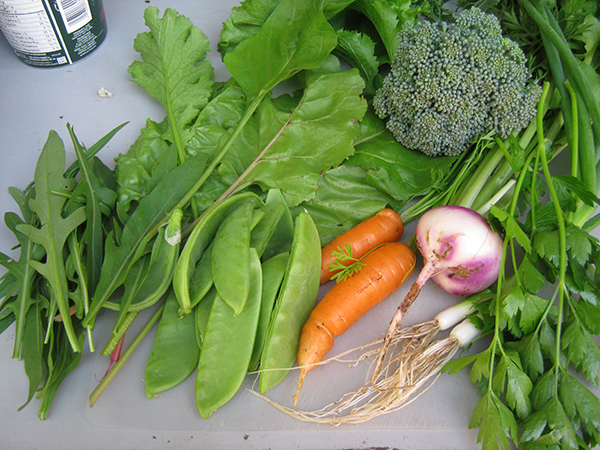
It is our human right to have easy access to good food. But something went wrong somewhere. We pay ridiculous prices for unhealthy food, and even more ridiculous prices for ‘organic’ food, which is often wrapped in plastic. Pisses me off.
Whoops! Fell into a bit of a rant there. Sorry. Back to our regularly scheduled programming.
Gardening is freedom
Planting a garden isn’t at all difficult. Harvesting that goodness is even easier. And I think we owe it to ourselves, our families, and our planet, to learn to grow food, and teach others that it’s not only easy, it’s necessary.
Growing a permaculture vegetable garden is one step toward putting things right in the world. Taking control of your food system gives you a sense of freedom. And it just gets better from there.
When you study permaculture you learn about much more than gardening. Alternative energy, appropriate technology, raising animals – all these and more are covered, and they are all steps on the path to personal freedom, and more control over your own life.
Please feel free to leave a comment, asking a question or sharing knowledge of your own.
Health, Hope & Happiness
Tracy

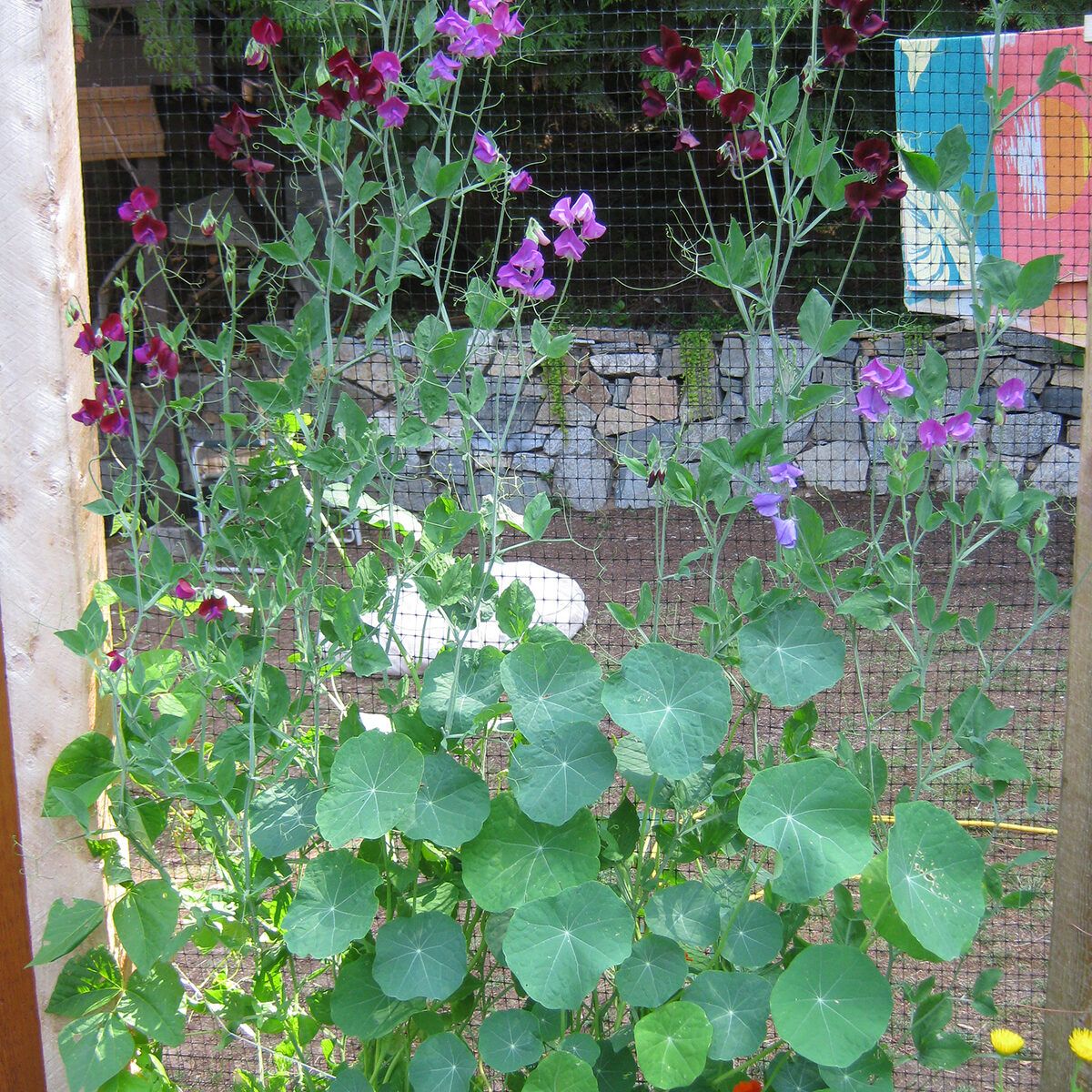
I agree!! There is nothing more enjoyable and up lifting than gardening. I garden in old bathtubs, but I use many of these steps to prepare the tubs for planing. Thank you for sharing your skills and knowledge.
Thank you! This year we will be planting in anything that will hold soil! I think there is even an old bathtub around here somewhere . . .
Happy gardening!